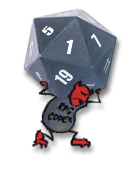Elex
Arbiter
- Joined
- Oct 17, 2017
- Messages
- 2,043
That's the problem - we don't know the exact mechanism here. We can only assume that BG3 tries to be somewhat coherent with what we know so far (otherwise everything is pointless), hence my question.
Baldur's Gate II intro says only that "[...] One such deity foresaw his own death as he walked the land before the Cataclysm. He left the score of mortal offspring, intended to be the fuel for his rebirth. That god was Bhaal, Lord of Murder, and you are one of his children". But "the fuel for his rebirth" is very vague.
Baldur's Gate wiki states this: "Once all the pieces of his divine essence had been collected, he left it to his most trusted deathstalker, Amelyssan, to perform the correct rites to bring about his resurrection and help him regain his power". This would indicate that no Bhaalspawns are around. If I recall correctly the player can either decide to become a god or he just gives the essence away.
The latter suggests that refusing godhood causes Bhaal to be resurrected. The former is that the player becomes a new Bhaal (but the only way for this to make sense would be by some kind of fusion, a'la Arthas and Lich King in Warcraft III: Frozen Throne).
i know that can feel strange but: the lore of bg1/2 don’t go above the tabletop adventure. Not even in the relation between bg1/2 and 3.
the modules are internal to WOTC stuff and they have their internal consistency/timeline wiky.
This is also why they ignore the existence of nwn intellect devourer.
instead is clear that this time BG3 is part of the forgotten realms lore consistency because they have heavy guideline and have a tabletop module as prequel.
this game is more D&D digital than any other game.
It’s 2020 they try to bring D&D to digital not make “another videagame”














